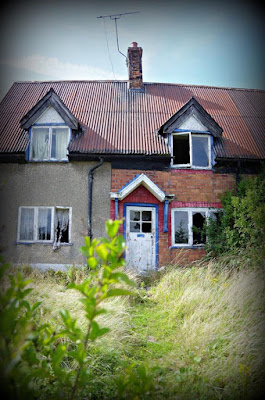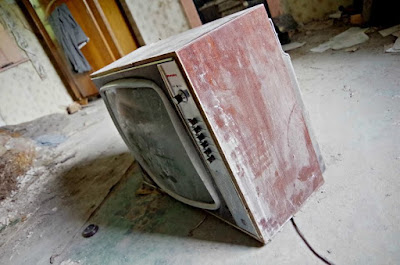It had been 10 months since my last visit and I was a little concerned that there might be nothing left. Luckily, the place was just as I remembered it, although some of the furniture and TV sets had been moved round and a previous visitor had smashed some of the windows.
We entered the house on the left first (it being the best one to explore) There are two reception rooms to the ground floor. The room to the left of the front door had most of the furniture in it. There were four easy chairs, three TV sets, a birdcage, clocks, a coffee table, with bottles on it and an old Christmas tree.
On closer inspection, the bird cage held the remains of a real bird.
Time stands still in Dream Cottage.
A close-up of the control panel on the Bush TV set.
Somebody seems to have tried to knock through to next door. (far right corner)
The wooden stairs lead to two bedrooms - nothing much to photograph, sadly.
The second reception room was quite bare this time.
Back into the main living room, there is a small pantry leading off, containing a cupboard with shelving holding old jars and a Dettol bottle.
Into the pink kitchen where the only thing of interest was some old bottles, one of which was labelled "Poison".
Then onto the second property.
This one was accessed round the back. The kitchen had been completely trashed. The living room was empty, with just a cream range remaining. The carpet was a "delightful" sage green shag pile which had seen better days!
The second living room appeared to have quite dodgy floor boards and very little else of interest. I have no idea who lived here or why/ when they moved out. It was a pleasant little mooch and worth a re-visit.






































































